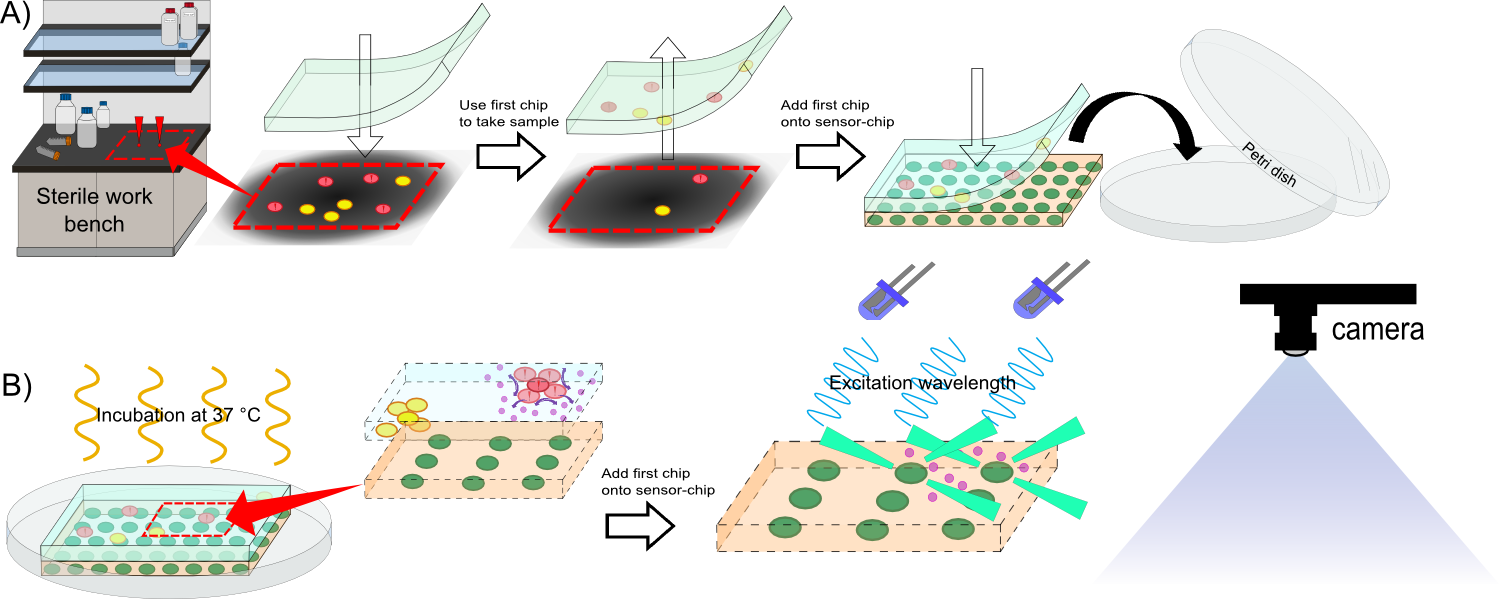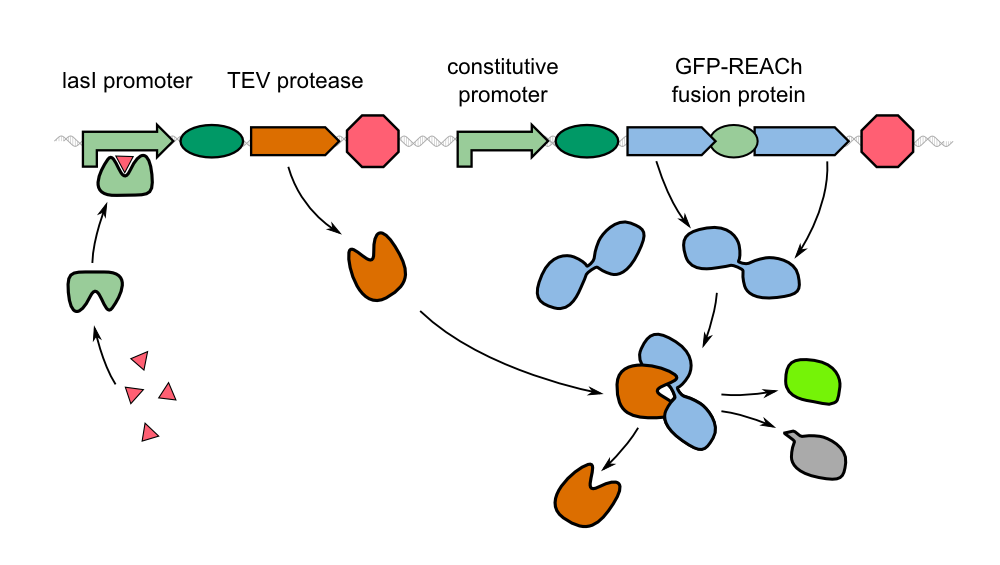Team:Aachen/Project/2D Biosensor
From 2014.igem.org
AZimmermann (Talk | contribs) (→A Novel Molecular Approach) |
(→Principle of Operation) |
||
| Line 18: | Line 18: | ||
''Add: Flow chart of chip measurement'' -> Patrick is working on it | ''Add: Flow chart of chip measurement'' -> Patrick is working on it | ||
| + | |||
| + | |||
| + | <center> | ||
| + | {{Team:Aachen/Figure|Aachen Flowsheet OD-device test ipo.png|title=How to use our 2D sensor device|subtitle=XXX|width=800px}} | ||
| + | </center> | ||
| + | |||
To detect ''P. aeruginosa'' cells, the chip is placed on a hard surface that is potentially contaminated with the pathogen. Subsequently, the chip is introduced into our measurement device [https://2014.igem.org/Team:Aachen/Project/Measurement_Device ''WatsOn''] where it is incubated at 37 °C. After a short time, the chip is illuminated with blue light. ''WatsOn'' takes a picture of the chip and the software ''Measurarty'' analyzes any fluorescent signal. Depending on the intensity of the signal and the size of the spot, ''Cellock Holmes'' can '''calculate concentration and distribution of ''P. aeruginosa'' ''' on the sampled surface. | To detect ''P. aeruginosa'' cells, the chip is placed on a hard surface that is potentially contaminated with the pathogen. Subsequently, the chip is introduced into our measurement device [https://2014.igem.org/Team:Aachen/Project/Measurement_Device ''WatsOn''] where it is incubated at 37 °C. After a short time, the chip is illuminated with blue light. ''WatsOn'' takes a picture of the chip and the software ''Measurarty'' analyzes any fluorescent signal. Depending on the intensity of the signal and the size of the spot, ''Cellock Holmes'' can '''calculate concentration and distribution of ''P. aeruginosa'' ''' on the sampled surface. | ||
Revision as of 18:11, 12 October 2014
|
|
|
 "
"

